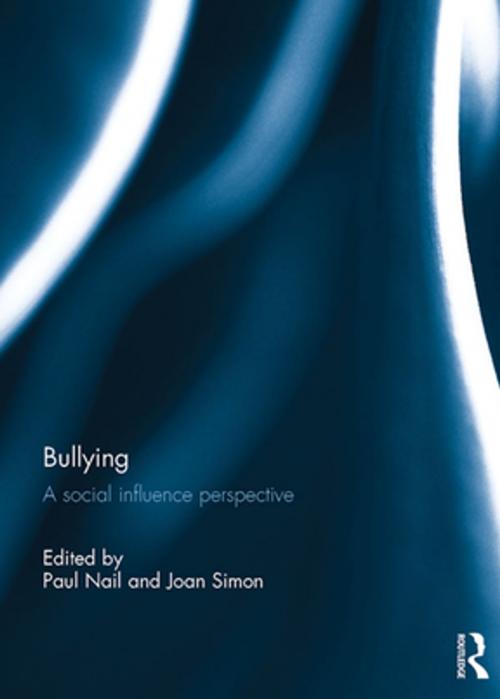Bullying
A Social Influence Perspective
Nonfiction, Health & Well Being, Psychology, Counselling, Mental Health| Author: | ISBN: | 9781317384977 | |
| Publisher: | Taylor and Francis | Publication: | October 2, 2017 |
| Imprint: | Routledge | Language: | English |
| Author: | |
| ISBN: | 9781317384977 |
| Publisher: | Taylor and Francis |
| Publication: | October 2, 2017 |
| Imprint: | Routledge |
| Language: | English |
There was a time when bullying was regarded as a relatively innocuous issue—a normal part of growing up—but this is no longer the case. The magnitude of the problems that bullying can lead to is evidenced by the rising amount of professional literature on bullying, as well as recent cases of bully-linked suicide and homicide in the popular media. Bullying always involves at least one bully and one victim, but there are a variety of social roles that can affect the duration and magnitude of bullying. These roles include bully assistants or supporters, victim defenders, and passive bystanders. Fundamental to creating successful intervention programs to prevent or reduce bullying is basic research that identifies the characteristics of those involved in bullying situations (e.g., personality, motivational, intellectual, physical, social, and behavioural).
This volume presents a broad range of original research describing how social influences are related to bullying. Reflecting the fact that bullying is a world-wide phenomenon and problem, the research comes from samples of individuals from Australia, Finland, Italy, New England, and Poland, as well as a review of the cyber-bullying literature, which is international in scope. This book was originally published as a special issue of Social Influence.
There was a time when bullying was regarded as a relatively innocuous issue—a normal part of growing up—but this is no longer the case. The magnitude of the problems that bullying can lead to is evidenced by the rising amount of professional literature on bullying, as well as recent cases of bully-linked suicide and homicide in the popular media. Bullying always involves at least one bully and one victim, but there are a variety of social roles that can affect the duration and magnitude of bullying. These roles include bully assistants or supporters, victim defenders, and passive bystanders. Fundamental to creating successful intervention programs to prevent or reduce bullying is basic research that identifies the characteristics of those involved in bullying situations (e.g., personality, motivational, intellectual, physical, social, and behavioural).
This volume presents a broad range of original research describing how social influences are related to bullying. Reflecting the fact that bullying is a world-wide phenomenon and problem, the research comes from samples of individuals from Australia, Finland, Italy, New England, and Poland, as well as a review of the cyber-bullying literature, which is international in scope. This book was originally published as a special issue of Social Influence.















